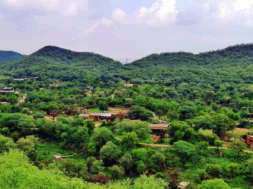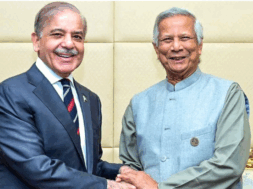
NEW DELHI, May 29: The Defence Research and Development Organisation (DRDO) on Wednesday successfully flight tested the RudraM-II air-to-surface anti-radiation missile from a Su-30 MKI jet off Odisha coast at around 1130 hours.
The Defence Ministry said the flight-testing of the RudraM-II missile met all the trial objectives. “The flight-test met all the trial objectives, validating the propulsion system and control & guidance algorithm,” DRDO said in a statement. The performance of the missile has been validated from the flight data captured by range tracking instruments like electro-optical systems, radar and telemetry stations deployed by integrated test range, Chandipur at various locations, including the on-board ship, it added.
“The performance of the RudraM-II missile has been validated from the flight data captured by range tracking instruments like electro-optical systems, radar and telemetry stations deployed by Integrated Test Range, Chandipur at various locations, including the on-board ship,” the statement said.
RudraM missile is the first indigenously developed anti-radiation missile designed to target enemy ground radars (surveillance, tracking) and communication stations in Suppression of Enemy Air Defence (SEAD) missions. The RudraM-II is the latest version after the mark-1 version was tested four years ago by Su-30MKI, the backbone of India’s fighter fleet.
An indigenously developed solid-propelled air-launched missile system, RudraM-II is one of the finest and meant to neutralise many types of enemy assets. India currently operates the Russian Kh-31, an anti-radiation missile. The RudraM missiles will replace the Kh-31s.
Defence Minister Rajnath Singh congratulated DRDO, IAF and industry on the successful test-flight of RudraM-II. The successful test has consolidated the role of the RudraM-II system as a force multiplier to the Armed Forces, he said.
Secretary, Department of Defence R&D and Chairman, DRDO Samir V Kamat complimented the DRDO team for their untiring efforts and contribution culminating into the successful flight test, the Ministry said in a statement.
RudraM-II is an indigenously-developed solid-propelled air-launched missile system meant for air-to-surface role to neutralise several types of enemy assets. A number of state-of-the-art indigenous technologies developed by various DRDO laboratories have been incorporated in the missile system.
The missile can be launched from a range of altitudes and can pick up enemy radio frequencies and signals from radars from a range of over 100 km. The missile can operate in Lock-On-Before/After-Launch systems. The internal guidance system of the missile allows it to direct itself toward the target after the launch.
The Rudram-1 version was test-fired from Sukhoi in 2020 off the east coast of Odisha. The Rudram-1 version has two seekers – A passive-homing head seeker, which can detect and classify targets over a range of radio frequencies and one Millimetre Wave seeker that helps the missile to operate in different weather conditions.
The mark-1 version has a range of 100-150 km and can reach up to speeds of Mach 2 (two times the speed of sound). It has a launch altitude range of 1 km to 15 km. In 2022, the Indian Air Force proposed the acquisition of the Next Generation Anti-Radiation Missile (NGARM) in a ₹ 1,400 crore deal. Reports suggest the missile can be launched from the Mirage 2000 multirole fighter aircraft. Adani Defence has partnered with DRDO in mass-producing the RudraM-I missile.
(Manas Dasgupta)














